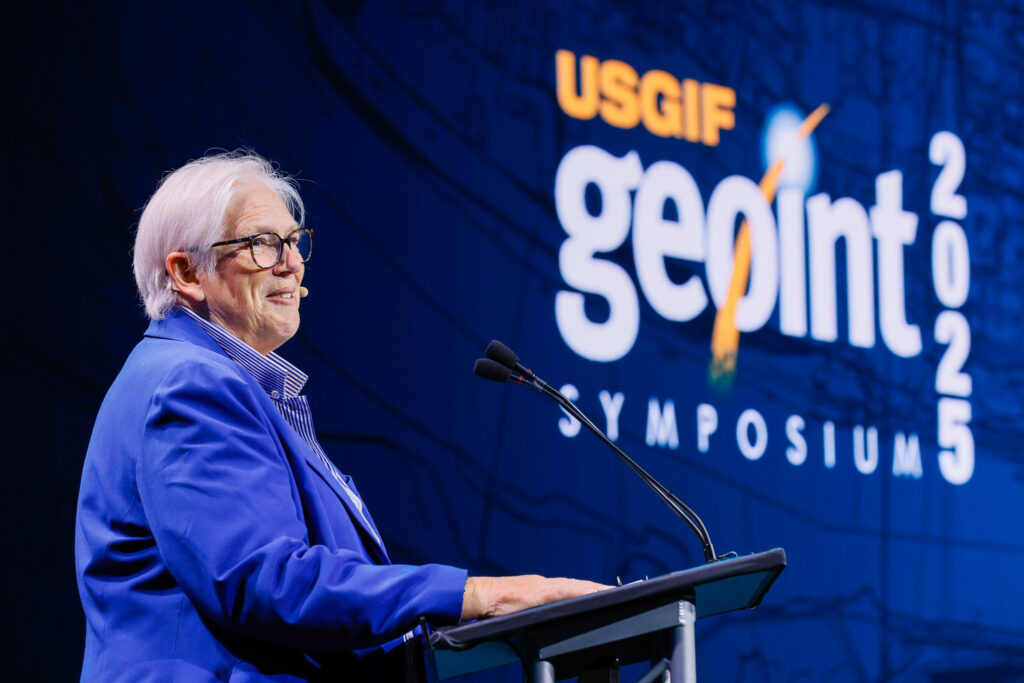Honoring The Fallen: A New Memorial
A new NGA memorial honors the service members who died while supporting U.S. mapping missions as part of the Inter American Geodetic Survey.

A new memorial at the headquarters of the National Geospatial-Intelligence Agency in Springfield, Va., pays tribute to 34 geospatial pioneers who died during a formative era for American mapping and geodetic efforts.
The memorial, unveiled in July of 2022 during a celebration of the 50th anniversary of the Defense Mapping Agency (DMA), honors the efforts of those who worked for one of the DMA’s forerunners: the Inter American Geodetic Survey (IAGS).
IAGS began in 1946 as a U.S. Army initiative charged with creating accurate, detailed maps of Latin America. The value of such maps had become clear during World War II, and shortly after the war, U.S. military leaders decided they wanted a better-defined picture of the land to America’s south. IAGS partnered with nations such as Cuba, Bolivia, Peru, and Chile, leading surveying missions and also training a generation of Latin American cartographers at a school at IAGS’s headquarters in Panama.
“The approach wasn’t to be the 800-pound gorilla. Rather than go in and try to brute force-map all of South America, we took the approach of training and equipping South American nations to do that work,” said Jack Hild, president of Hild Enterprises. Hild spent 30 years at the NGA, serving in roles including deputy director of source operations, as well as assistant chief information officer. He crafted NGA’s Homeland Security mission after the 9/11 attacks.
Hild championed the memorial after learning that nearly three dozen U.S. service members died while on the job at IAGS. He first heard about their stories a decade ago, when he learned that Admiral Robert Murrett, then the director of NGA, was headed to Chile to lay a wreath on a memorial to fallen American service members. During pro-bono work with NGA’s History Office, Hild stumbled upon a trove of copies of the IAGS newsletter, Que Pasa, and began searching for information about the plane crashes, boat capsizings, and other accidents that claimed the lives of American service members as they endeavored to survey challenging terrain in areas such as the Andes Mountains.
The newsletter published every month or so throughout the IAGS four-decade existence, and Hild’s work was possible only because decades earlier, a retiring IAGS leader chose to ignore orders to destroy his archived Que Pasa collection. As Hild combed through hundreds of old issues, he uncovered story after story of sacrifice: a 1954 plane crash near Medellin, Colombia, that claimed the lives of two IAGS service members, Joseph Bermudez and Martin McCarthy; a 1964 helicopter accident in which two IAGS service members, Richard Conner and David Johnston, died while searching for a missing Peruvian Air Force helicopter; and a 1979 helicopter crash that killed IAGS engineer Raymond Johns along with three officers from the Chilean Army.
Hild researched each of the accidents, compelled by a growing sense that the stories of IAGS sacrifice needed to be told.
“Somehow the corporate memory of all of these accidents had been lost,” says Hild.
Raymond Johns’ helicopter crash in 1979 marked the final work-related death of an IAGS worker. The agency itself was fading in importance at that time: IAGS merged into the DMA in 1972, then moved its headquarters from Panama to Fort Sam Houston in Texas in 1980, and finally shuttered in 1989. As Hild attempted to connect with the families of those who died during IAGS work, he made contact with several of Johns’ relatives, one of whom traveled to NGA for the memorial’s unveiling, and another—Johns’ son who watched online.
As Hild pursued the IAGS memorial project, Johns, especially, captured his imagination. Johns had been in Cuba when Fidel Castro took power, and Que Pasa shared his stories about destroying IAGS records before fleeing the country. Johns gravitated towards challenging assignments in Trinidad, Paraguay, and Brazil, and died while installing the first GPS tracking station in southern Chile.
Johns’ legacy—his adventurousness, pioneering work, and swashbuckling personality— encapsulated for Hild the mystique surrounding IAGS.
“He’s the kind of guy that you’d want with you in a third-world bar late at night,” Hild said of Johns. “Probably a little rough around the edges, but he’d seen it all and he knew how to do good work.”
The new NGA memorial honors IAGS fallen service members, but Hild’s research also turned up plenty of triumphant stories. One of the best comes from 1966, when a group of mountaineers made a big announcement about their plans to be the first to scale a Central American mountain. They made it to the top—only to discover an IAGS survey marker embedded in the rock at the summit.
Hild began his IAGS memorial odyssey because in his decades at NGA, he had never heard of anyone dying while supporting U.S. mapping missions. Now, thanks to the new memorial, the legacy of those fallen service members—as well as the pioneering, internationally collaborative work they supported—will inspire future generations of America’s geospatial intelligence professionals.
Featured image: Members of the Inter American Geodetic Survey. (Copyright: NGA Historic Research Center)
Related Articles
USGIF Celebrates 2025 GEOINT Symposium Student Poster Winners
USGIF proudly recognizes the outstanding achievements of the top three winners of the 2025 Student Poster Competition, selected from an exceptional field of uni…
USGIF Honors Vice Admiral Robert Sharp, USN (Ret.), with 2025 Lundahl-Finnie Lifetime Achievement Award
The United States Geospatial Intelligence Foundation (USGIF) is proud to announce Vice Admiral Robert “Bob” Sharp, USN (Ret.), as the recipient of the 2025 Arth…
GEOINT Symposium 2025 Day Three Recap
GEOINT’s Next Frontier: Space Collaboration and Strategic Alignment The final general session day of the 2025 GEOINT Symposium highlighted the challenges and o…




